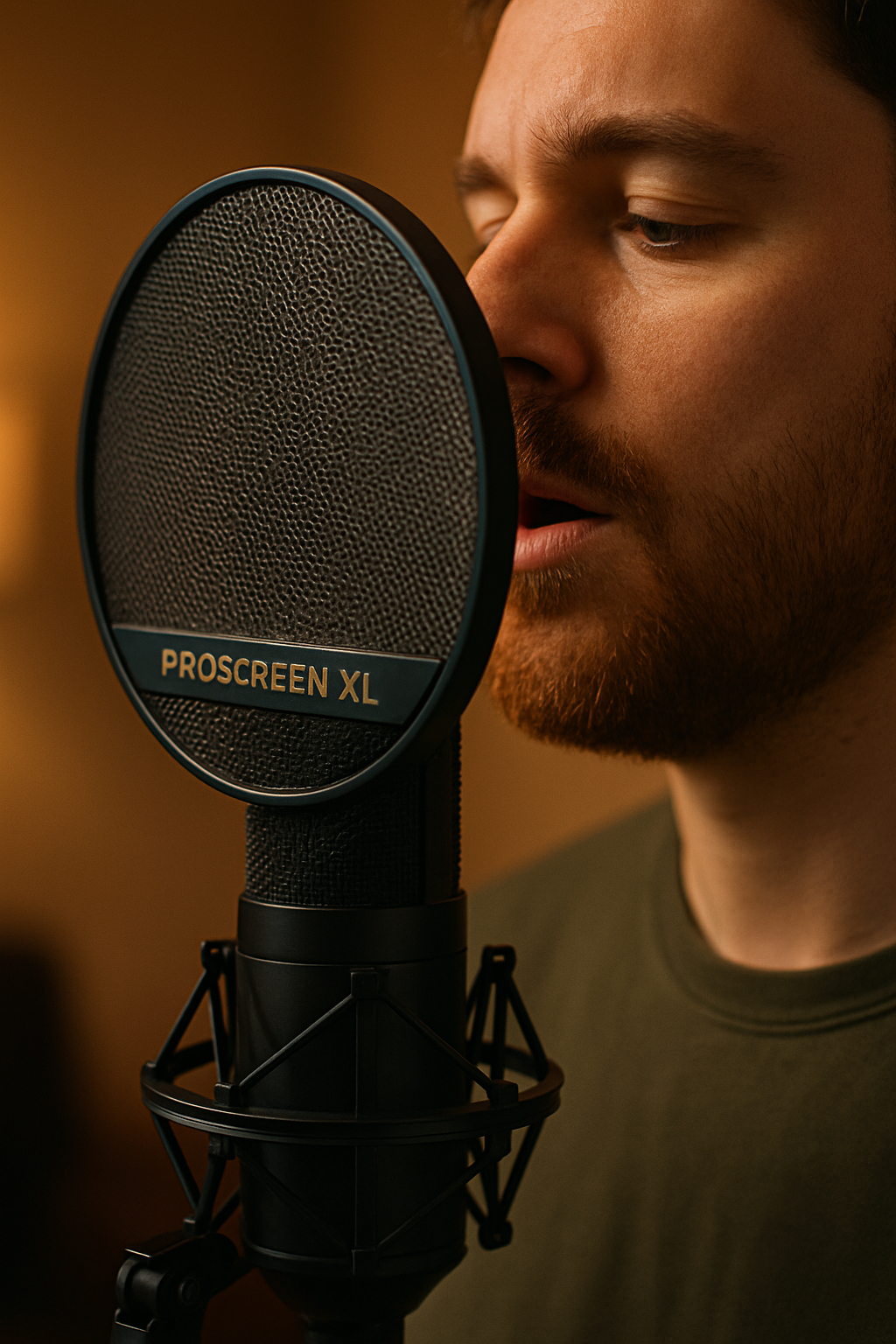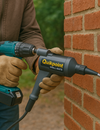
Every home studio hits the same problem eventually: plosives. Those harsh bursts of air that sneak into your microphone when you say words with “P,” “B,” or “T” — turning otherwise perfect takes into distorted, unusable recordings.
That’s where a pop filter comes in — and not just any pop filter, but the Proscreen XL Metal Pop Filter, a serious upgrade from traditional fabric screens. Let’s explore why this metal mesh marvel is becoming the go-to choice for vocalists, podcasters, and engineers who demand clarity, durability, and professional polish.
What Are Plosives — and Why Do They Ruin Recordings?
Plosives are bursts of air caused when pronouncing hard consonant sounds like:
-
P (as in “power”)
-
B (as in “bass”)
-
T (as in “time”)
When you speak or sing into a microphone, these air bursts hit the mic’s diaphragm directly, causing:
-
Low-frequency “pops” or thuds in the audio
-
Distorted vocal tracks that can’t be fixed in post-production
-
Extra editing work and lost recording time
That’s why using a pop filter is essential — it acts as a barrier, diffusing air before it reaches the microphone.
How the Proscreen XL Metal Pop Filter Solves the Problem
Unlike most pop filters that use fabric mesh, the Proscreen XL uses a precision-engineered metal screen with micro-perforations that redirect and diffuse airflow.
Key Advantages:
Superior Airflow Diffusion: The metal screen breaks up plosive air without blocking or dulling sound frequencies. You get cleaner vocal takes — no pops, no muffling.
Preserves High-Frequency Detail: Fabric filters can absorb or scatter high-end frequencies, slightly dulling your tone. The Proscreen XL’s acoustically transparent metal mesh keeps your vocals crisp and natural, preserving clarity in your sibilants (“S” and “T” sounds).
Easy to Clean and Long-Lasting: Fabric filters collect moisture and lose tension over time. The metal Proscreen XL wipes clean in seconds and maintains its shape for years — ideal for heavy studio use.
Sturdy, Studio-Grade Build: With its solid gooseneck and clamp mount, the Proscreen XL stays locked in position, even during long vocal sessions. Its professional design complements premium microphones like the MXL 770 or Rode NT1.
Why It’s an Upgrade Over Fabric Filters
| Feature | Fabric Pop Filter | Proscreen XL Metal Filter |
|---|---|---|
| Plosive Control | Good | Excellent – redirects air precisely |
| Sound Transparency | Slightly muffled highs | Preserves full frequency detail |
| Durability | Prone to tearing or sagging | Built to last years |
| Maintenance | Hard to clean | Wipe clean instantly |
| Professional Appearance | Basic | Sleek, studio-grade look |
If you’re aiming for broadcast-quality vocals, upgrading to a metal pop filter like the Proscreen XL is one of the easiest, most effective improvements you can make to your recording chain.
Real-World Results: Hear the Difference
You’ll notice the upgrade immediately:
-
Vocal takes sound tighter, cleaner, and more defined.
-
You can record closer to the mic, capturing richer tone and presence without distortion.
-
Editing time drops because your raw tracks are already smooth and pop-free.
That’s why engineers, podcasters, and content creators consistently recommend the Proscreen XL — it’s a small investment that delivers a big upgrade in sound quality.
Final Takeaway
If you’re still using a basic fabric pop filter, it’s time to step up your game. The Proscreen XL Metal Pop Filter not only stops plosives in their tracks but also enhances clarity, reduces maintenance, and lasts far longer than fabric models.
Your microphone deserves a filter that matches its quality — and your recordings will thank you.




